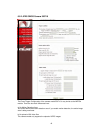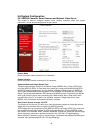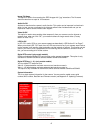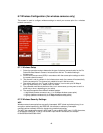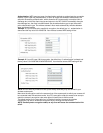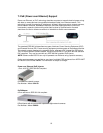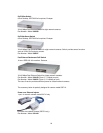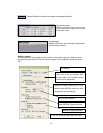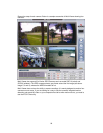52
IMPORTANT
Infrastructure Mode
This is an 802.11 networking framework in which devices communicate with each other by first
going through an access point (AP). In Infrastructure mode, wireless devices can communicate
with each other or can communicate with a wired network. When one AP is connected to a
wired network and a set of wireless stations, it is referred to as a basic service set (BSS). An
extended service set (ESS) is a set of two or more BSSs that form a single sub network. Most
corporate wireless LANs operate in Infrastructure mode because they require access to the
wired LAN in order to use services such as file servers or printers.
Ad hoc Mode
This is an 802.11 networking framework in which devices or stations communicate directly with
each other, without the use of an AP. Ad hoc mode is also referred to as Peer-to-Peer mode, or
an independent basic service set (IBSS). Ad hoc mode is useful for establishing a network in
which a wireless infrastructure does not exist or in which services are not required.
SSID (service set identifier)
This is a 32-character unique identifier attached to the header of packets sent over a WLAN that
acts as a password when a mobile device tries to connect to the BSS. The SSID differentiates
one WLAN from another, so all access points and all devices attempting to connect to a specific
WLAN must use the same SSID. A device will not be permitted to join the BSS unless it can
provide the unique SSID. An SSID is also referred to as a network name because, essentially, it
is a name that identifies a wireless network.
To connect a wireless client such as a Wireless Pro Series Network Camera to a specific AP, the
user of the camera should specify the SSID name in the camera’s wireless IP setting.




